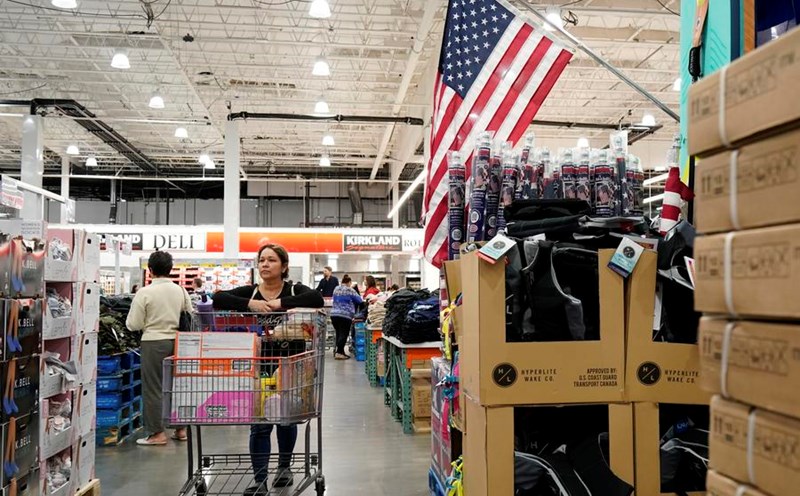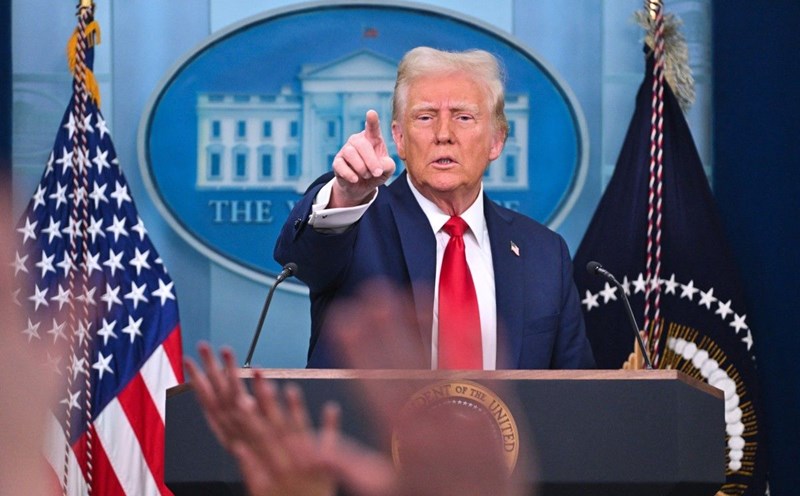According to an announcement from the White House, starting from February 1, 2025, the US will apply a 25% tax on imports from Canada and Mexico and a 10% tax on goods from China.
Following the news, global financial markets experienced a volatile weekend session, raising concerns about the impact on the economy and international trade. US stocks plunged, Treasury yields rose sharply, while gold and the US dollar became the destination for safe-haven flows.
The biggest shock came from the US stock market, with all three major indexes falling immediately after the tariff announcement. The Dow Jones Industrial Average lost more than 300 points, while the S&P 500 and Nasdaq also fell significantly. Technology and industrial stocks were hit hardest, on concerns that major trading partners such as China and the European Union (EU) could retaliate. Large corporations such as Apple, Boeing and Caterpillar all recorded significant declines, reflecting investor uncertainty about risks to production costs and global supply chains.
In contrast to the decline in stocks, the US dollar rose sharply against other major currencies, including the euro, Japanese yen and Canadian dollar. Investors sought the US dollar as a safe haven amid concerns about the global economic outlook.
According to Reuters, the strengthening greenback can put pressure on US exporters, as goods become more expensive on international markets. However, large banks and financial institutions benefit from the shift of money into highly liquid assets.
Another notable development is the sharp rise in the yield on the 10-year US Treasury bond. This is a sign that investors are expecting the US Federal Reserve (Fed) to continue to maintain a tight monetary policy to control inflation. Rising bond yields make borrowing costs more expensive for businesses and individuals, which could slow economic growth in the future. However, given the current instability, whether the Fed will actually continue to keep interest rates high remains an open question.
Commodity markets also saw significant volatility. Brent crude oil prices fell more than 2% after a chaotic trading session, falling below $85 a barrel. The main reason was concerns about weakening demand amid escalating trade tensions. If tariffs slow the global economy, energy demand could also fall, putting further pressure on the oil market.
While stocks and oil plunged, gold emerged as a safe haven asset. The price of gold surged, hitting a new record of $2,844.10 an ounce, as investors rushed to safety amid financial market turmoil. This is a common reaction during periods of great economic and geopolitical risk.











